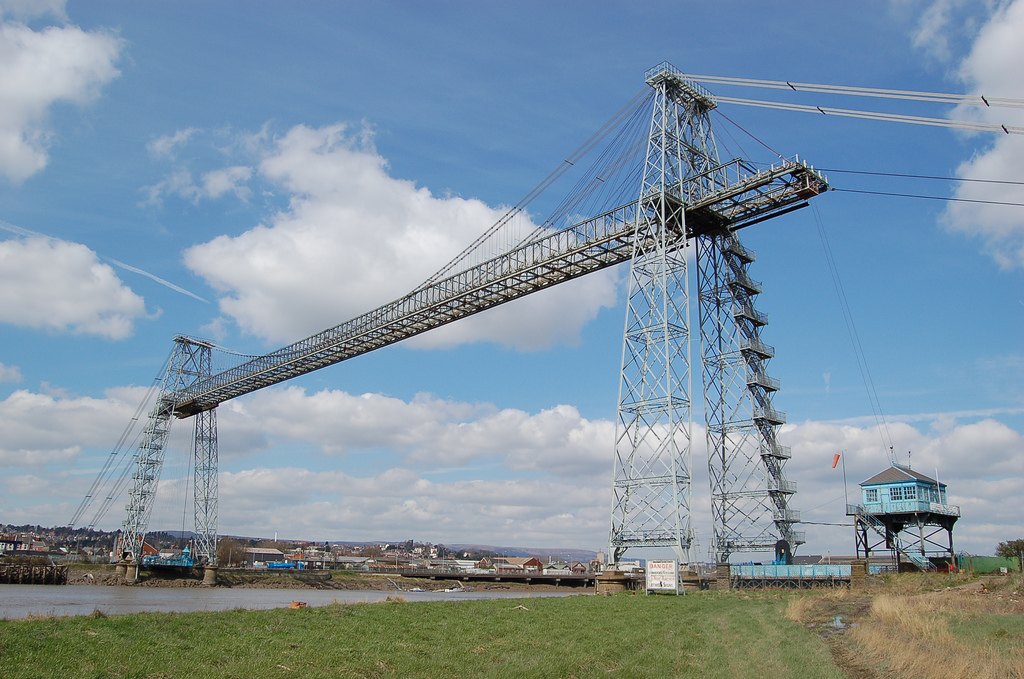PEOPLE have been conceived on it, which takes Newport’s love affair with the Transporter Bridge perhaps a little too far.
Boy Scouts have been sworn in on it and people have had candlelit supper on its gondola.
Aeroplanes have flown under it and 20 years ago at the height of the miners’ strike it was hijacked.
It has appeared in films, most notoriously Tiger Bay, released in 1959 starring Hayley Mills, for which purpose it was `moved’ to Cardiff, and in Flight To Freedom, the story of the singer John Cortez and possibly the worst British film never to be made.
“The story of the last 100 years has been Newport’s infatuation with its Transporter Bridge,” says Monty Dart, a member of the Friends of Newport Transporter Bridge (FONTB) who has the task of compiling the most complete archive of the bridge’s history.
Her own home, which she shares with husband Tom, is testament to her interest in the frankly quirky.
The house in Allt-yr-Yn Avenue, apart from being home to three cats and a small troop of tortoises, is a shrine to exotic objects that include 1940s telephones (working), Bakelite wirelesses, masks and the life-size statue of a nude man, painted in gold and displayed in such a manner as to provoke fits of giggles in lady visitors.
“We’re in partnership in the theatrical lighting and sound business,” Monty says. “Which might explain the fascination with gadgets and curios because that’s what the Transporter Bridge is. It isn’t a stationary thing like an ordinary bridge, it’s a moving object. It’s a machine.
“From the very beginning, when it was opened by Lord Tredegar almost a century ago, it has been an icon for Newport. Apart from being one of the most photographed things in Wales it has appeared on biscuit tins and collectors’ cards, mugs and cups, plates, and little souvenir models have from time to time been popular.
“It remains a mechanical marvel and without exaggeration, one of the wonders of the civil engineering world. There are only half a dozen such bridges left in the world and they were all built in a very short time span in the last quarter of the 19th century and the first decade of the 20th.
“The reason they are as they are, with a suspended, moveable gondola, is so that ships could pass underneath without impeding the flow of traffic.
“At various times there have been proposals to melt the bridge down for scrap and sell it to the Americans but it has sailed through these dangers and with luck and a little tender loving care will be with us in another hundred years’ time.
As FONTB prepare for the bridge’s centenary in 2006 the scramble to glean every bit of information about its first century is on.
“I have already collected a lot of newspaper cuttings but thousands of Newportonians must have photographs, cuttings or artefacts connected with the Trannie,” Monty says.
“One of the things I’ve heard of, but not seen, are the tokens to permit them to use the bridge which used to be issued to the men working at Lysaght’s.
“It is said people used to steal chunks of the cork bumpers once fitted to the underneath of the gondola to make carvings.
“If anyone has documents I can arrange to have them photocopied and returned or else we can go to people’s houses and photograph papers and objects.”
The Argus is making its archive available and there is an excellent record kept by the council – but the story of the bridge is fundamentally a human one.
“I would love to hear from people who have been proposed to on the bridge or for whom the bridge has been a part of the background to their life in peace and war.”
It wasn’t so much a question of Monty being pushed into the job of FONTB archivist as her taking a flying jump.
“You can admire the bridge from a technical viewpoint but I an fascinated by the human stories that are bound up with it.”
Reference: 2004-001




